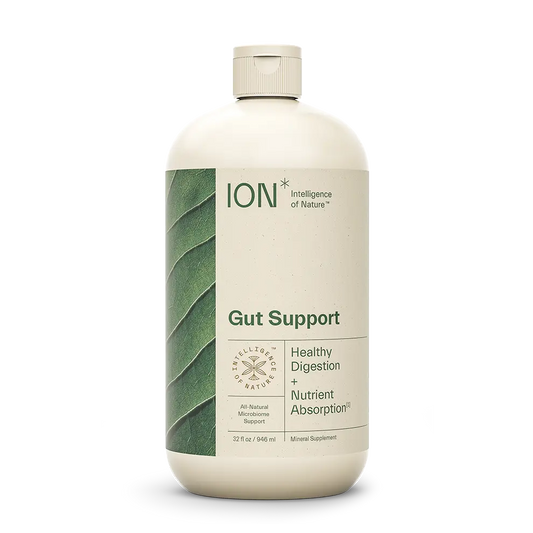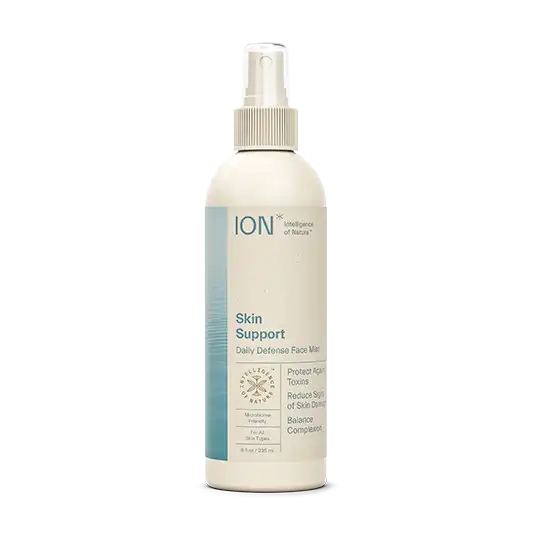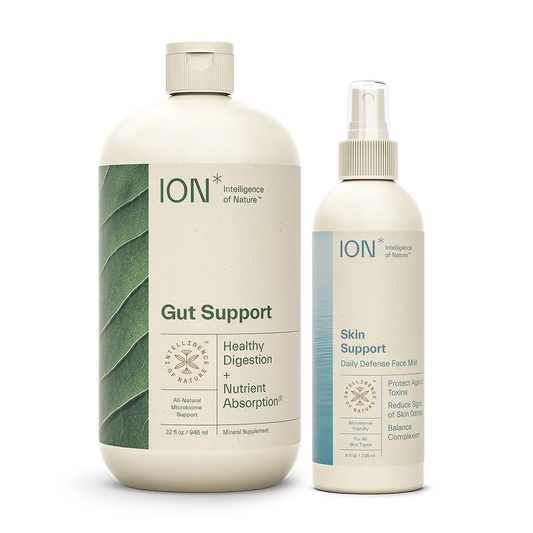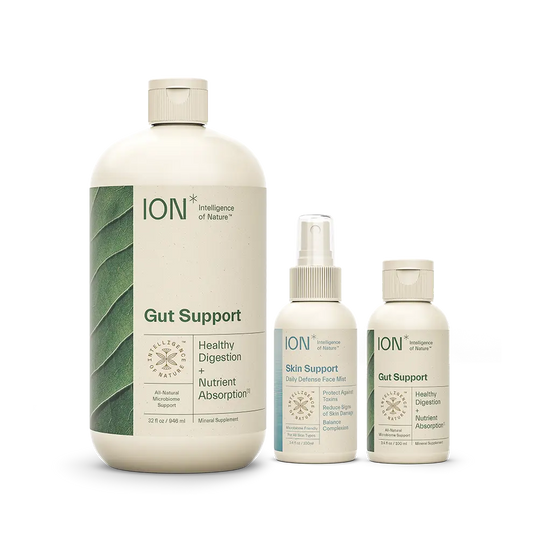Layered, dynamic, and ever evolving, your skin isn’t as superficial as popular belief. In fact, it’s a foundational part of your overall health.
You have several barrier systems that function not only to defend you from your environment, but also to connect you to it. These barriers (think lungs, sinuses, gut, and you guessed it - skin) are made up of epithelial cells that function intelligently to keep the bad stuff out and let the good stuff in. And make no mistake, you need both protection and connection when it comes to your environment.
Take vitamin D for instance. While protecting your skin from UV damage can help prevent free radical production, it also inhibits the formation of vitamin D, which is an essential nutrient that fosters bone, muscle, and immune health. As with most things, the sun is not really your enemy in moderation. Indeed, balancing your relationship with the sun is a fundamental part of whole-body health.
And after years of working to strengthen some of your most foundational barriers with ION* Gut Support, we have decided it’s time to reformulate for your outermost terrain with ION* Skin Support.
Let’s take a closer look at how this critical barrier functions.
Your skin is a continually renewing and vast structure (the largest organ of the body in fact). It acts as your outermost physical barrier, protecting your internal environment from pathogens, chemicals, and sunlight. And under normal circumstances, the skin’s layered nature maintains an ideal level of skin hydration and performs a variety of immune-related functions, including defense against UV radiation (sunlight) and other environmental toxins, allergens, and pathogens1. Normal circumstances, however, should not include the host of pollutants found in modern man's environment.
So, how can we help protect this dynamic organ? First, we need to understand it.
Your skin consists of three main layers: the epidermis (outer skin), the dermis (inner skin), and the underlying fat cells.
The epidermis contains immune cells and is made of four sublayers named corneum, granulosum, spinosum, and basale.
- The corneum consists of cells surrounded by water-repelling lipid molecules.
- Next is the granulosum where the tight junctions reside (just as found in your gut). These tight junctions attach between skin cells controlling passage of toxins.
- Below the granulosum is the spinosum, partly responsible for the skin's flexibility and strength.
- Basale is the deepest layer of the epidermis, and it is where keratinocytes are formed.
Under these four layers is the dermis, which contains blood vessels that transport nutrients. The dermis is also where hair follicles, sweat glands, and more immune cells reside.
Beneath the dermis is the underlying layer of fat cells that store energy in the form of fatty acids. This fat cell layer also produces a variety of other important molecules such as growth factors, and multiple immune-related compounds.
Your epidermis is where a lot of the action happens.
Since the most critical parts of the skin barrier include the corneum layer, the granulosum’s tight junctions, and the microbiome, let’s dig into those areas a little deeper.
The corneum layer is the first barrier that potential pathogens encounter on the skin, followed by a second barrier within the granulosum layer. If pathogens get beyond either of these physical barriers, they will trigger your immune system to fight.
So contrary to common belief, the outer part of your skin is not just layers of “dead” cells, but in fact a critical part of your body’s defensive system.
The tight junctions within the granulosum layer create a selective (and intelligent) second barrier between the skin cells, regulating both inside-out and outside-in movement of various molecules such as water and ions2.
To demonstrate the importance of tight junctions, proteins in barrier skin function, researchers experimented on mice. The researchers removed the claudin protein holding together the tight junctions. Deleting this claudin molecule resulted in the tight junctions not maintaining a barrier and the mice dying shortly after birth due to a significant loss of fluids through their skin3.
Further, when tight junctions function well, the outer surface of the skin becomes a healthy, stable environment that supports a diverse community of microorganisms known as the skin microbiome. And just like with your gut, only in the presence of a diverse microbiome can your skin maintain a healthy state of equilibrium and perform its essential barrier functions.
Your microbiome doesn’t begin and end in the gut.
The collection of microbes that make up your outermost barrier is a vital part of your health. It supports your immune system by informing it when pathogens are present and also helps to fend off those pathogenic threats. And despite a relatively inhospitable environment (your skin is salty, acidic, and nutrient-poor), a microbiome of diverse and health-supporting bacteria, fungi, and protozoa all make their home here. In fact, you probably have around 1,000 different types of bacteria on your skin.
This diversity, as well as balance, is considered a vital component in immune and barrier health (an imbalanced microbial population is associated with several inflammatory disorders). When it comes to skin health, the strength of your microbiome is foundational...both outside and in.
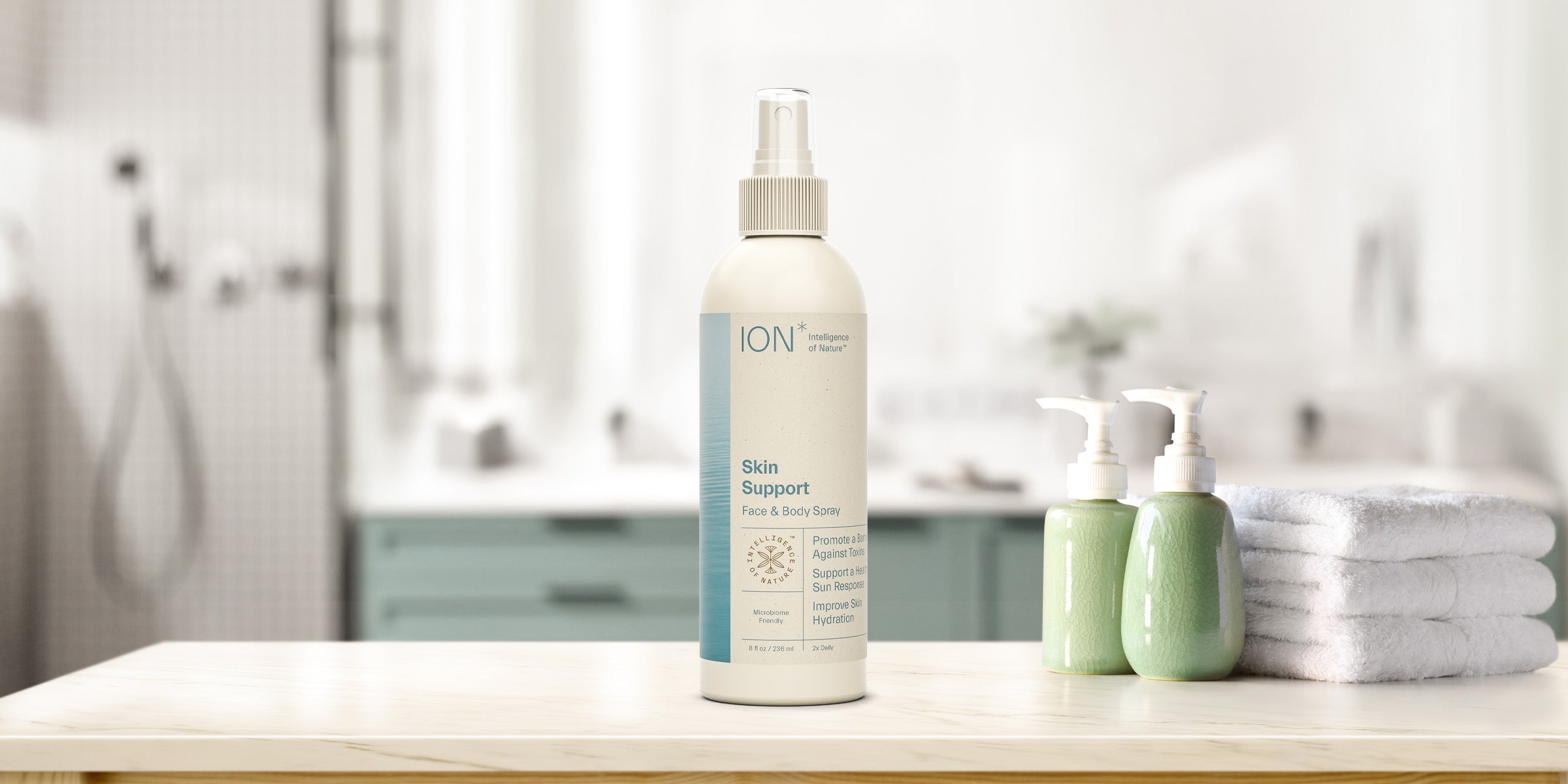
Gut health and skin health go hand in hand.
It may come as a surprise, but there are more similarities than differences between your skin and your gut lining. Both of these physical barriers use tight junctions to control the flow of water, ions, and molecules into your body. Both are defensive in nature, protecting you from toxins. And both the skin and gut are supported by a microbiome that supports immune response to pathogens.
Beyond these similarities, did you know these supportive barriers can directly affect each other? The gut and skin relationship is crucial to our overall health and well-being. Research has shown that the gut can influence the signaling pathways that coordinate processes essential to skin health through your vascular system (veins and arteries). Other research indicates that the gut microbiome may migrate directly to the skin allowing the gut to impact the skin from the surface as well.
Given the similarities and connections between the gut and skin barriers, our scientists took what they learned in developing ION* Gut Support and applied it to formulating a new product that also supports their innate differences.
ION* Skin Support still utilizes our signature blend of humic extract and purified water, Terrahydrite®, but is specially formulated to work with keratinocytes (the most prominent cells in the epidermis), balance your reaction to UV insult, and naturally hydrate skin cells.
Together, however, strengthening all your epithelial barriers to deliver inside-out protection against environmental insults is the most complete way to foster whole-body health.
Happy Microbiome!
Matthew Bednar, PhD
Bringing science out of the lab and into your life.
References:
- The skin microbiome: impact of modern environments on skin ecology, barrier integrity, and systemic immune programming, Susan L. Prescott, Danica-Lea Larcombe, Alan C. Logan, Christina West, Wesley Burks, Luis Caraballo, Michael Levin, Eddie Van Etten, Pierre Horwitz, Anita Kozyrskyj and Dianne E Campbell, Prescott et al. World Allergy Organization Journal (2017), 10:29 DOI 10.1186/s40413-017-0160-5.
- Could tight junctions regulate the barrier function of the aged skin?, Marek Svobodaa, Zuzana Bílková, Tomáš Muthný, Journal of Dermatological Science, 81, (2016), 147–152.
- The Dynamics of the Skin’s Immune System, Alan V. Nguyen and Athena M. Soulika, Int J Mol Sci. 2019 Apr; 20(8): 1811, doi: 10.3390/ijms20081811.



